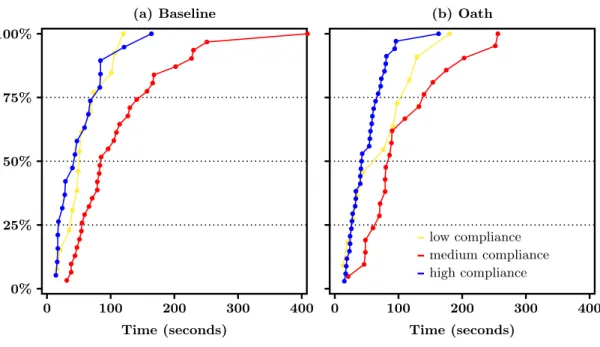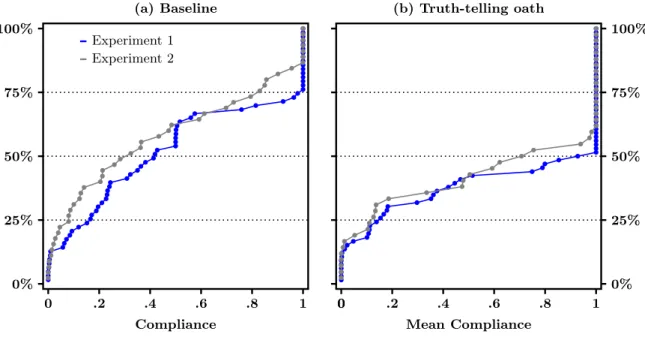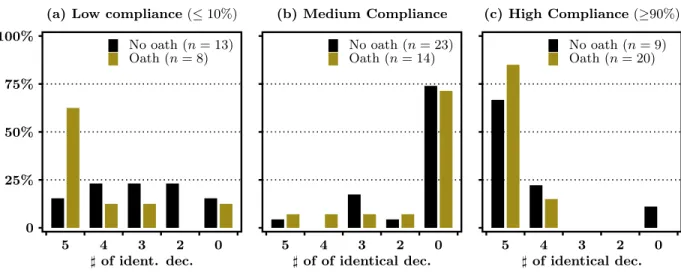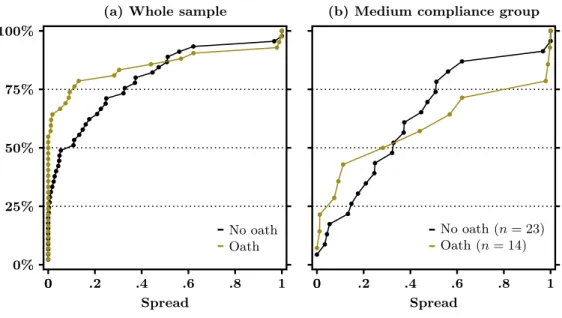Who'll stop lying under oath? Empirical evidence from Tax Evasion Games
Texte intégral
Figure




Documents relatifs
For example, being in one of the three experiment treatment groups (receiving different penalty information and reduced instalment penalties) appears to have no statistically
Altogether, we find that individual communication behavior varies in quantity – since senders send more often informative messages in the oath treatment –and does change in quality –
Our study investigates the determinants of tax compliance of micro-enterprises in Africa using a survey of 700 retailers in Bamako, Mali. Two major conclusions can
The study was applied on a sample of (300) counselors had been selected in a random sample from vocational and school guidance centers of ten provinces.After
The Signal Detection Model also predicts that those for which the task was more difficult given their ability should have a lower discrimination index, either measured by the ROC
First, the effect of the oath in the loaded environment confirms a key insight from social psychology: subjects committed to tell the truth through a truth-telling preparatory act
Self-reported income under equal tax rates and with social information Looking at horizontal inequity, taxpayers learn the average reported in- come of other group members ¯ X −i,t−1
2'3

